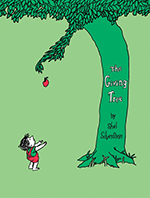ANY EXCUSE is a good excuse for a picnic (as well as a decorated tree). Although the sweltering heat of July is almost unbearable for a lot of dining outdoors, if you plan for a late dinner instead of lunch, it is a special way to enjoy the warm weather. And there's nothing better than a cool slice of watermelon to help with the heat. I have fond memories from childhood when we would ritually spread newspaper on our backyard picnic table and slice a fresh watermelon. A lot of people find this unusual, but we always brought the shaker outside and sprinkled our slices of watermelon with salt before we ate it—I like mine with mild sea salt, please—it intensifies the juicy flavor. To this day, watermelon is one of my favorite things about summer. Another summer ritual is making fresh tomato sandwiches on good white bread with lots of mayonnaise, salt and fresh-ground pepper—sliced on the diagonal, but that's a different story altogether.
IN AN ERA of plastic everything, it's nice to know that great eco-friendly alternatives exist for picnics and casual get-togethers. This disposable beech wood cutlery is a great alternative to plastic. I've decorated a small wire tree with the wooden utensils. You can also find plates made from naturally-shed banana tree leaves and those cool striped paper straws I remember from my early childhood. The list is growing as the market responds to a more responsible and sustainable way of living. Of course what was commonplace back then, is only had at a premium these days. The plus to all of this is that many new products are beyond utilitarian and have a natural, biodegradable beauty that remind one of the day when sandwiches were wrapped carefully in waxed paper and you carried other food in glass containers wrapped up in a cloth, tucked carefully into a picnic basket. The containers weren't thrown away, but put back into the basket and washed when you got home.
PICNICS ARE PERFECT for two people as well as lawn games. Croquet and horseshoes are as easily played by two as well as two teams, but the most romantic way to spend an evening is a special outdoor meal. It's interesting that these wooden utensils are made of beech wood, because lovers have a long history of carving their initials into the smooth gray bark of these trees. These carved affections grow as the tree grows and get bigger with time due the thinness and elasticity of beech bark. Thin slabs of beech bark have also been used since early times to write on and were sometimes tied together in making the first books. And the symbolism of these tree "ornaments" goes even further because the Latin name for the beech tree is Fagus, which comes from the Greek phagein, "to eat." It's high time to plan a special meal outside. And if you're having it with someone special, instead of defacing a tree, have a picnic under its shade to stay as cool as possible.
TAKE IT OUTSIDE | The biodegradable beech wood cutlery is by Seletti. The tree is a green coated wire tree from IKEA. The antique oilcloth-lined basket was lent by my friend Odette. She also brought this beautiful miniature Crimson Glory watermelon to me (I'm saving the seeds!). It's from the Mennonite Delano Community Farm Market, in Delano, Tennessee. The striped paper straws are made by Kikkerland Design, Inc. The gingham cloth in the basket and the croquet balls and hammers were lent from Green Central Station, my good friend Nancy Tran's shop specializing in vintage picnic items in Birmingham, Alabama. Click on the photo to see an uncropped version, twice to enlarge even more.
©2010 DARRYL MOLAND | ALL RIGHTS RESERVED
photography and styling by Darryl Moland












































